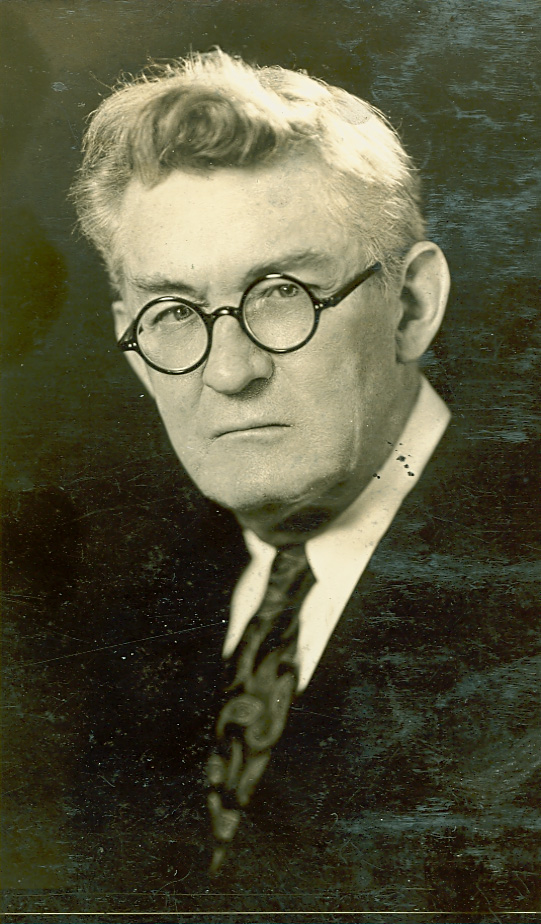Three tiers of racist ideology.
Bob Gordh
In her recent bestseller Caste, Isabel Wilkerson sought to explain the nature of White Supremacist, (or simply racist) ideology in the United States. I propose that while Wilkerson recognizes two tiers of such ideology, she fails to recognize a 3rd tier, even though many stories she tells suggest a third tier.
What motivates the policies and behaviors of Racist ideology? Desire for wealth, power, status, self-esteem, strengthening one’s group identity, and even sadistic pleasure are a few. My concern is not mainly to investigate these motives but rather to examine the kinds of ideology that rationalize racist policies and behaviors. The ideology does not motivate the policies and behaviors, but it permits and validates them and so makes them more likely to happen and persist. Ideology is influential. People live by it, and sometimes die for it.
Racist ideology has at least 3 significant tiers. Tier one consists of the false claims that have been widely subscribed to for hundreds of years that propose the characteristics of White people and non-White people make the White “race” superior. Perhaps the biggest false claim is that there is even any such thing as a racial group: false because race is a social construct, not a biological reality. Since this superiority/inferiority thesis rests on faulty empirical information, I call this tier “disinformation.” This includes everything from garden variety stereotypical claims like “Black people are lazy” and “White people are highly intelligent” to elaborate scientific (or pseudoscientific) theories about the “innate” characteristics of hierarchically arranged “races.” Ibram X. Kendi’s book Stamped from the Beginning, provides a chronological guide to the most influential racist claims that have disfigured American thinking about “race.”
Another false claim also belongs to the disinformation tier — “The United States is a land of equal opportunity”. Ostensibly racially neutral, this claim nevertheless has racist implications. Obviously, Black people don’t fare as well in a host of ways as White people in this country. But if opportunity is equal, then there must be something wrong with Black people (innate qualities, cultural norms, etc.) that explains their failure to thrive. Note that this false claim, or myth, about “America” is one of many that racist ideology shares with capitalist ideology. (A mere coincidence?)
Casteism is the second tier of racist ideology. Although Wilkerson focuses primarily on this tier, she does implicitly recognize my first tier but she differentiates between racism and casteism:
“Any action or institution that mocks, harms, assumes or attaches inferiority or stereotype on the basis of the social construct of race can be considered racism. Any action or structure that seeks to limit, hold back, or put someone in a defined ranking, seeks to keep someone in their place by elevating or denigrating that person on the basis of their perceived category, can be seen as casteism.”
It seems odd not to consider racial casteism as part of racism. I suggest that we consider casteism a component, or tier, of racism. What Wilkerson characterizes as racism in the above passage may best fit in the tier that I call disinformation.
So what is the difference between tier one and tier two? Tier one is about characteristics; tier two is about place. Disinformation makes false claims that attribute better and worse characteristics to people of different racialized groups. Casteism assigns people of different racialized groups to higher and lower positions in a hierarchy.
In a rough sort of way, casteism is based on disinformation. The two, however, are by no means entirely in synch. If they were, there would be a much stronger correlation between personal characteristics and status in White Supremacist society than there is. What casteism gives whites is membership in a kind of club that grants its members status and many privileges. And the beauty of it is that as long as you are White, you don’t have to qualify for membership, you are automatically included. And of course, Black people, no matter what their characteristics — no matter how intelligent they are or whatever — are not entitled to the status or privileges.
But our portrayal of racist ideology is seriously incomplete unless we recognize a third tier, which I call nullification.
Remember that the main purpose of White Supremacist racist ideology is to rationalize and support racist policies and practices. Tiers one and two are not themselves sufficient to this task. The “problem” is that they are simply not sufficiently evil to rationalize the most heinous and unspeakably cruel of racist policies and practices. Nullification harbors even more vicious false claims, and is needed, and has in fact been an essential part of, racist thinking for centuries.
Let us go back to slavery. Apologists for slavery relied on slanderous disinformation about Blacks along with unrealistically positive disinformation about Whites. That’s tier one. We know, too, that these apologists used Great Chain of Being thinking to place Blacks on a lower level than Whites. That is tier two, casteism. It is a commonplace, too, that the enslaved were regarded as mere tools or implements. Is this just a further expression of casteism? It is a mistake to see it this way. To see human beings as mere objects is far worse than to assign them an inferior position in a hierarchy. It is to nullify them; it is to reduce their standing to nothing.
To look further into the difference between tier two (casteism) and tier three (nullification) let us move to a useful passage from Caste: In 1913, a prominent southern educator, Thomas Pearce Bailey, laid out what he called the racial creed of the South. It amounted to the central tenets of the caste system, one being, “Let the lowest white man count for more than the highest negro.”

Bailey’s tenet smacks of casteism. In Bailey’s formulation, any Black person ”counts” less than any white person, but the Black person still “counts” to some degree. In contemporary words, White lives matter more than Black lives, but Black lives do matter to some extent. White lives are at the top of the hierarchy of worth and Black lives the lowest, but Black lives are still in the hierarchy. But if Black people are nothing but tools or implements, then they do not belong to the hierarchy at all. And that is precisely what is claimed by nullification: Blacks may be sentient, speaking beings, but they have no moral standing whatsoever. They have zero intrinsic worth and nothing in the way of rights.
In another passage, Wilkerson recounts an instance in which “[an] order from the justices went out in New Hanover County, North Carolina, in the search of a runaway named London, granting that “any person may KILL and DESTROY the said slave by such means as he or they think fit’.” Now this is not casteist thinking but nullifying thinking. Wilkerson is certainly very aware of this vicious kind of thinking, but she does not distinguish it from casteist thinking. I think it is important that the distinction be made. It is easy to conflate the two, because they both hold that White people are superior to Black people and both have been used to rationalize slavery racist policies, practices and institutions. In that sense, they are complementary, with one just enhancing the other. But they are also contradictory. Casteism says Black life has some intrinsic value. Nullification says that while Black life may have instrumental value, it has no intrinsic value.
The horrifying implication of this tier three position is that Whites can do anything they want to Blacks with impunity. And indeed, what they did want to do during the time of slavery was horrifying beyond words. Isabel Wilkerson is completely aware of this.
(Nothing I say here is intended to imply that she is any less aware than she should be of the horrors of American racial violence either during slavery or afterwards. It is not the violence she has missed but the additional tier of ideology that has condoned it.) Accordingly, she rightly tells us that the American slave economy (for it was an economy entwining both the North and the South) was a system based on torture:
“Enslavers bore down on their hostages to extract the most profit, whipping those who fell short of impossible targets, and whipping all the harder those who exceeded them to wring more from their exhausted bodies.”
These whippings, as Edward Baptist tells us in The Half Has Not Been Told, were administered with vicious, flesh tearing southwestern bull whips. It is only from the point of view of nullification that the overseer need have no moral compunction whatsoever about inflicting this kind of agony. Wilkerson is aware that this happened often, and she quotes Baptist to that effect: “Whipping was a gateway form of violence that led to bizarrely creative levels of sadism.’ Enslavers used ‘every modern method of torture,’ he observed, from mutilation to waterboarding.” Accountability is nowhere to be seen. This relationship to violence is underwritten not by casteism but by the harsher third tier of racist ideology.
When slavery was officially abolished (except for incarcerated persons), unconstrained violence against black people did not cease. Public, carnival lynchings were perhaps the most extreme example. In part, no doubt, as Wilkerson points out, they were intended to terrorize black people into submission to the caste system. Wilkerson’s descriptions of the almost euphoric responses to these events by those who attended also suggest communally sadistic motivations. The ideological rationalizations for these atrocities cannot be justified simply by claiming that the victims were lower on the human hierarchy. Instead the victims must be seen as having no place at all in the human hierarchy — they are nullified.

Perhaps the most infamous official U.S. government espousal of anti-Black nullification is the Supreme Court’s Dred Scott Decision of 1857 in which Roger Taney, Chief Justice of the Supreme Court, made the blanket declaration that “the Negro has no rights that a white man is bound to respect.” No rights! The implication, as James Cone points out in The Cross and the Lynching Tree, is “[T]hat to be black meant that whites could do anything to you and your people, and that neither you nor anyone else could do anything about it.” The implication is not just that Black lives matter less than White lives but rather that Black lives don’t matter at all.
Although the Dred Scott Decision was supposedly voided by the Thirteenth Amendment to the U.S. Constitution, Black Americans have reasons over the years to suppose that Taney’s pronouncement is still the law of the land. Nowhere is this more evident than with respect to the criminal justice system, including the police, the courts, and the system of jails and prisons.
In Minneapolis, when Derek Chauvin murdered George Floyd, he seemed to be enjoying what he was doing and feel no compunction in doing so. He seemed to believe that George Floyd’s humanity proposed no moral argument whatsoever against torturing him to the outcome of death. It could be claimed that Chauvin’s conviction showed that American society rejects this view. And yet, Philip M. Stinson, in an article entitled “This Case Is an Outlier,” points out that “Less than 2 percent of the on-duty police officers who kill someone are ever charged with a crime and held accountable in courts of law.” Considering that black people are disproportionately the ones killed, this statistic comes pretty close to indicating that where police violence is concerned, Black people still have “no rights that a White man is bound to respect.” There is impunity for the perpetrators of violence, even murder, when the victim is Black. Nullifying views of Black people continue to be an influential tier of racist ideology in the United States.
I hope to have established that if tiers one and two of racist ideology — disinformation and casteism — played roles in rationalizing American slavery, so too, did tier three — nullification. Moreover, nullification, far from being just an add-on, was the most powerful of the three, the one that most essentially defined the ethos of the slave culture.
Until we understand that nullification remains a powerful player in “race” relations today, Black Americans will continue to be subject to the same dangers and abuse as in the past. But if we agree to identify and acknowledge the role of nullification, we will have a better chance of defeating it.







